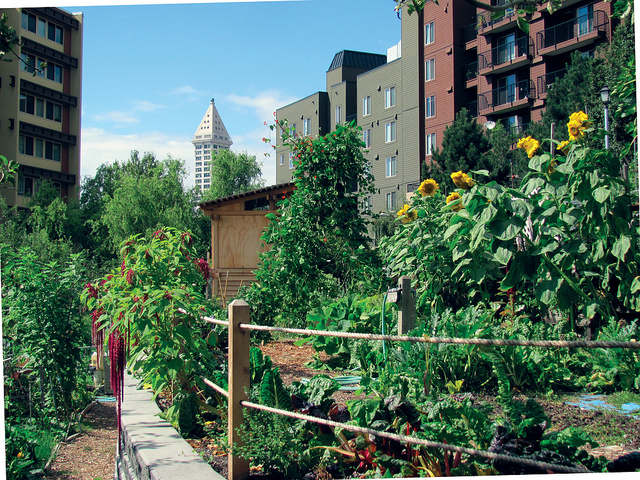The Of City Blooming
The Of City Blooming
Blog Article
About City Blooming
Table of ContentsThe Greatest Guide To City BloomingCity Blooming Things To Know Before You BuyExcitement About City BloomingCity Blooming - An OverviewMore About City Blooming
Fascinated in growing food available for sale in the City of Chicago? Considering starting a community garden? Modifications to the Chicago Zoning Ordinance enable farming uses like area yards and city farms in many parts of the city. Below is a list of often asked questions pertaining to the rules and policies that farmers need to consider when planning an urban agriculture project.
The zoning modification does not customize any kind of various other codes managing composting, structure licenses, purchasing or renting City possessed property, business licenses or environmental contamination. There are existing codes that control these problems and they remain completely result and may apply to your project. Area yards are commonly possessed or managed by public entities, public organizations or community-based organizations and kept by volunteers.
Urban farms grow food that is planned to be sold, either on a nonprofit or for-profit basis. Due to their commercial objective, city ranches call for a company license.
The smart Trick of City Blooming That Nobody is Discussing
The quantity of garden compost product can not exceed 25 cubic yards at any type of given time according to the standards in 7-28-715 of the City's Municipal Code. Since the dirt at a lot of new yard websites needs changing, compost, dirt, timber chips, or various other products can be obtained to create or enhance the expanding space.

If a building permit is needed after that the hoophouse will certainly be thought about an accessory structure. You can learn even more about the structure license needs by speaking to the Division of Structures. The 25,000-square-foot size limit is meant to stop a solitary community yard from controling an offered block or taking away from the block's existing residential or commercial personality.
The limitation does not put on gardens located in Public Open Area (POS) areas. Can there be more than one area yard that is 25,000 square feet on a single block? Yes. The dimension restriction puts on specific yards, not to specific blocks. No. Fence is not needed, nonetheless, yards that have large parking lot might be required to mount fencing or other landscaping features.
City Blooming Fundamentals Explained
B1 & B2 areas call for that all business use activities be carried out indoors. R areas limit business activity. The policies reflect the function and intent of the Zoning Code. Is fence needed for urban ranches? Yes. Fences might be needed, along with landscape design and screening, for particular parking lot and outside work or storage locations depending upon place and the certain activity happening.
Yes. Urban ranches call for structure permits and zoning authorizations prior to building and construction. Various other kinds of city review might view be called for depending on specific structures, activities, size, landscaping, licensing, public heath and stormwater monitoring concerns. A number of these needs are identified in the task design or allowing process, however, the applicant might be responsible to separately identify details licenses or allows that may be called for.
The Department of Organization Affairs and Customer Security can help establish the certain kind of business certificate that's required. Off street auto parking is required for the majority of commercial jobs in Chicago. The required number of car park rooms is based on the number of employees functioning on site and not the square video footage of the expanding space.
Get This Report on City Blooming

Yes. An urban farm can sell garden compost product produced on website, nonetheless, the operation should follow the regulations in 7-28-715 of the Chicago Municipal Code. Yes. Aquaponic systems are enabled inside on metropolitan farms in lots of zoning districts. Nevertheless, a zoning testimonial and structure authorization is required in order to mount frameworks or systems and a company license is required as described above.
Approximately 5 hives or colonies of honey bees may be kept as an accessory usage. Beekeepers must register with the Illinois Department of Farming. For more info about the proposed zoning amendment you may get in touch with the Department of Housing and Economic Advancement, Bureau of Planning and Zoning at 312.744.8563.
Farming in cities and city locations A metropolitan farm in Chicago. Urban agriculture refers to different methods of growing. https://packersmovers.activeboard.com/t67151553/how-to-connect-canon-mg3620-printer-to-computer/?ts=1719460146&direction=prev&page=last#lastPostAnchor, processing, and dispersing food in urban locations. The term additionally puts on the area tasks of animal husbandry, aquaculture, beekeeping, and cultivation in a city context. Urban farming is differentiated from peri-urban farming, which occurs in backwoods beside suburban areas.
The Ultimate Guide To City Blooming
, who look for to form social networks started on a shared values of nature and community holism. These networks can establish by way of official institutional support, coming to be integrated right into neighborhood town preparation as a "transition community" activity for lasting metropolitan advancement.
Some of the first proof of urban farming comes from Mesopotamia.
Report this page